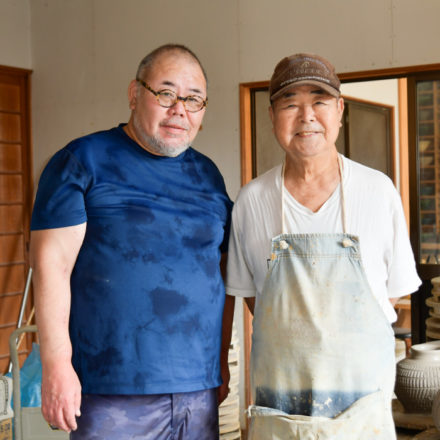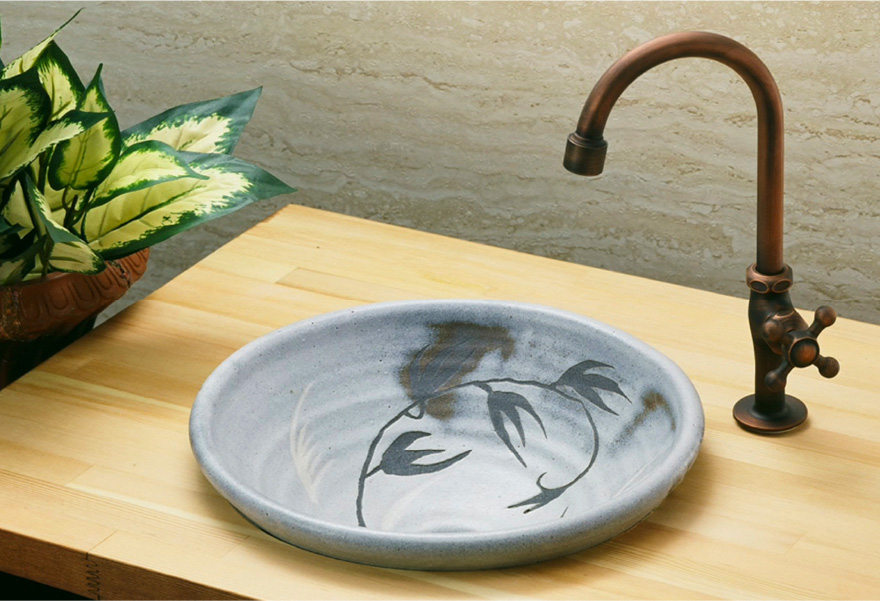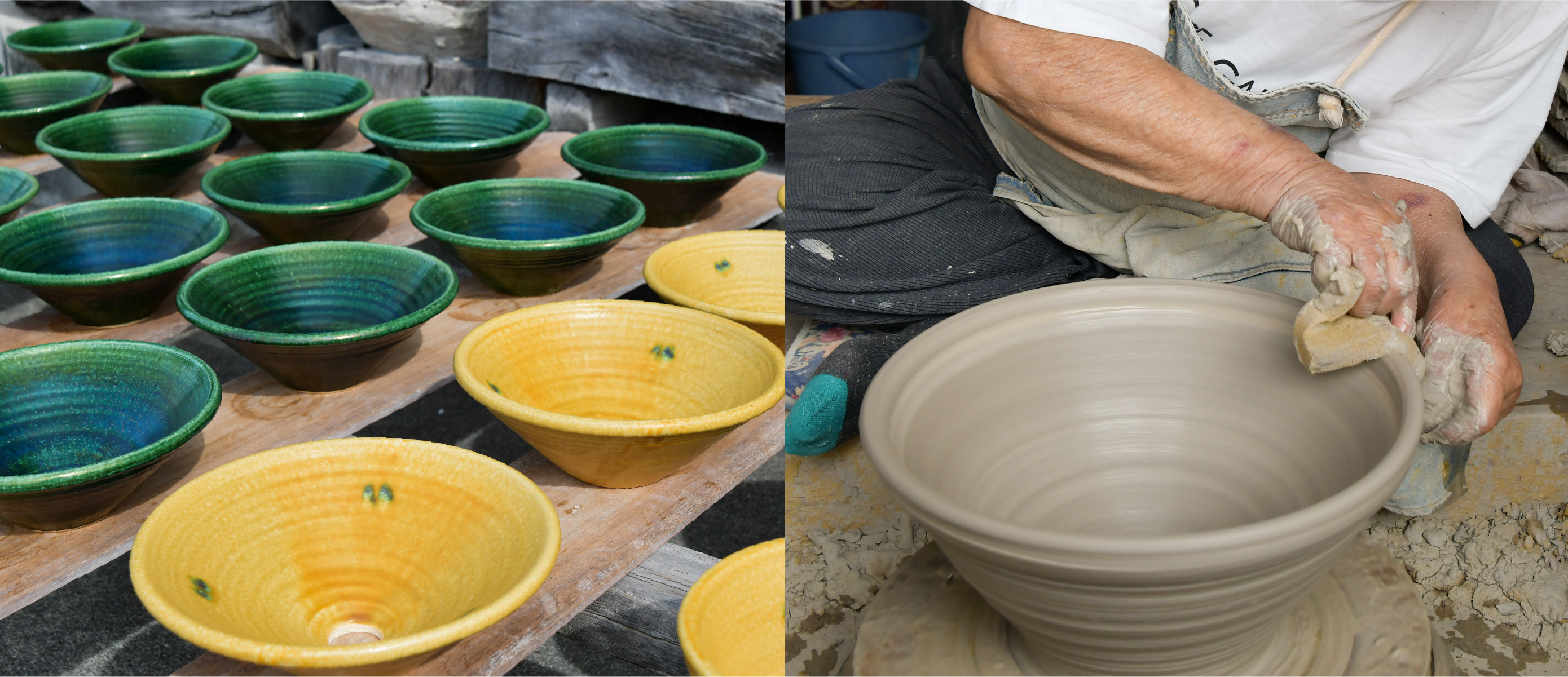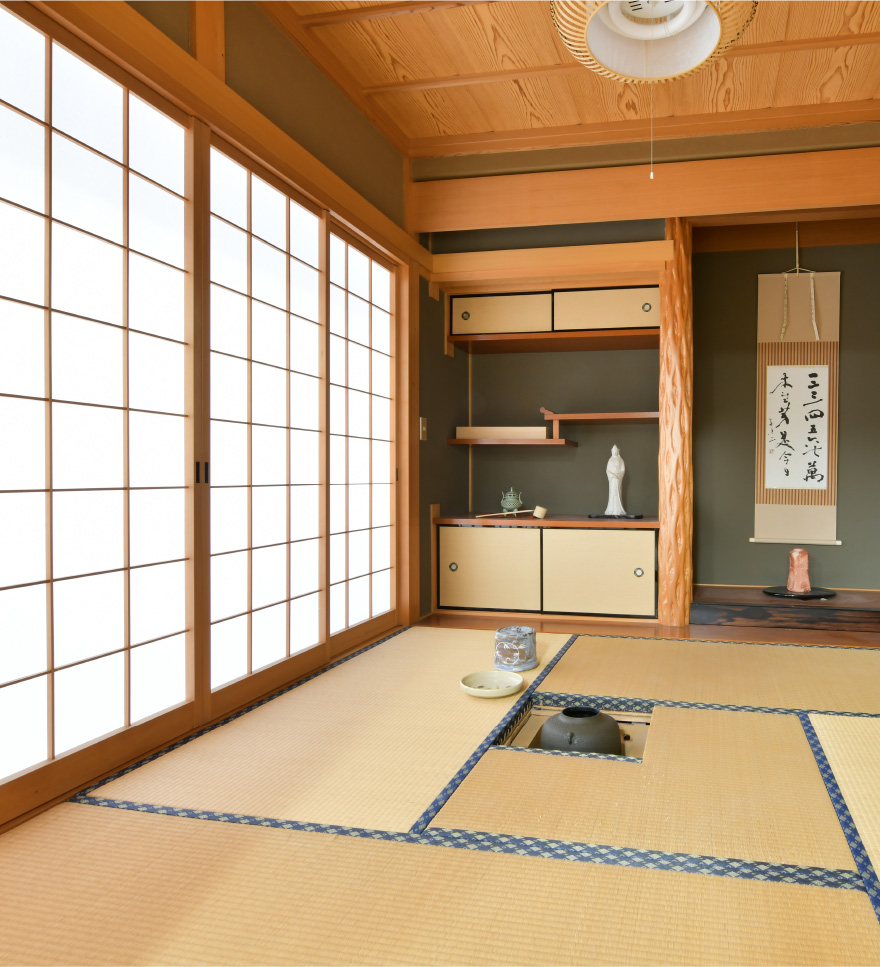Pottery made with no compromise to detail
The process of making washbasin is kneading the clay with a kneading machine first, and then shaping the clay on the potter’s wheel. It is then let dry, followed by biscuit firing and covered with the first coat of glaze and then firing once again. They have a wide range of designs to match different preferences and home interiors. Sinzan gama deals in washbasin by using traditional techniques such as Nezumi shino, Oribe, Kiseto and Ash glaze and also modern style ones such as vivid turkish blue, red or lemon yellow. Depending on the glaze they adjust the temperature of the gloss firing. At the end apply water-repellent coating and dry it to finish the product. The washbasin of Nezumi shino was awarded by the Ministry of Economy, Trade and Industry as a new style of work which is well harmonized with the tradition of Minoyaki. An Iron-oxide slip called Oniita is applied to white clay and then the slip is scraped with a spatula to make a pattern. After glazing and firing, the scraped area forms into a white pattern and the rest turns gray from the chemical reaction in iron. In addition, to express more texture of the work, the time and temperature of the firing process is adjusted to create burned spots or uneven baking until satisfied with the outcome. “I think it is important to make pottery without using machines to convey the value of traditional crafts. I want to express the spirit of pottery.”









